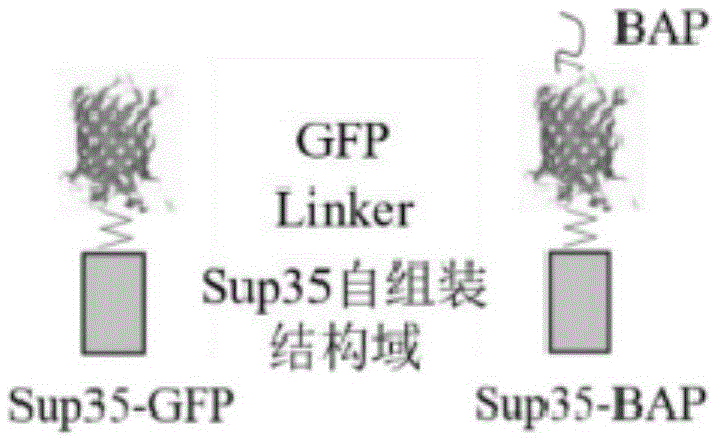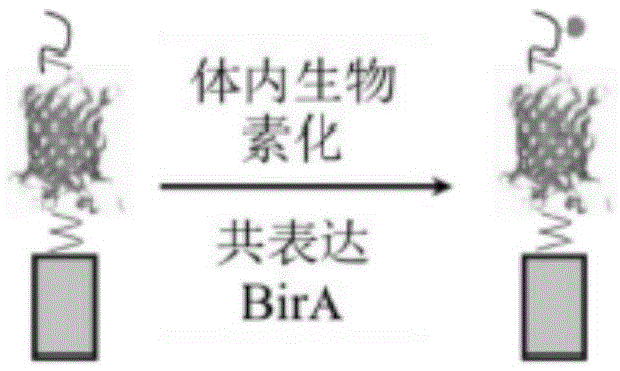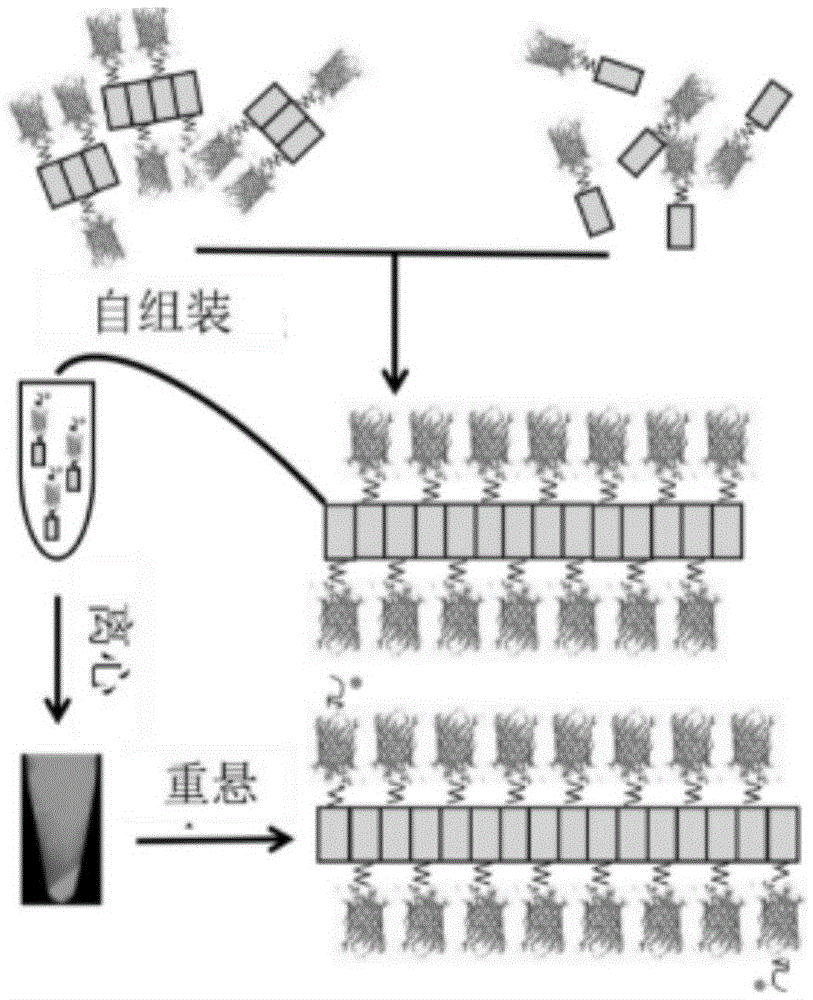Multifunctional fluorescent protein nanowire and nanowire-mediated immunoassay method
A fluorescent protein and green fluorescent protein technology, which is applied in the field of multifunctional fluorescent protein nanowires and its mediated immune analysis, can solve the problems of insufficient detection sensitivity and complicated preparation, and achieve improved sensitivity, simple preparation process, and non-specific adsorption. low effect
- Summary
- Abstract
- Description
- Claims
- Application Information
AI Technical Summary
Problems solved by technology
Method used
Image
Examples
Embodiment 1
[0080] Example 1 Preparation of self-biotinylated fluorescent bifunctional protein
[0081] 1. Self-biotinylated fluorescent bifunctional protein cloning: through molecular cloning, the yeast prion protein self-assembly domain (1-61 amino acids of Sup35, referred to as Sup35) and green fluorescent protein (Green Fluorescent Protein, GFP) are flexibly connected to the polypeptide gene Fusion connection to form fusion protein Sup35-GFP (attached figure 1 left). A flexible polypeptide (LinkerPeptide) and a biotin-accepting peptide (BiotinAcceptedPeptide, BAP) are fused at the C-terminus of Sup35-GFP to form a fusion protein Sup35-GFP-BAP (Sup35-BAP for short, attached figure 1 right). The BAP tag in the fusion protein Sup35-BAP can be biotinylated under the action of Escherichia coli biotin ligase (Biotin-protein Ligase (EC6.3.4.15), BirA) (attached figure 2 ).
[0082] 2. Expression and purification of biotinylated fluorescent bifunctional protein: the gene of the fusion pr...
Embodiment 2
[0090] Example 2 Controllable Preparation of Multifunctional Fluorescent Protein Nanowires
[0091] 1. Preparation of Sup35-GFP seeds: After incubating the Sup35-GFP fusion protein at 4°C for one week, the long nanowires were broken into nanowire fragments by the shear force generated by ultrasound to prepare seeds (see attached Figure 5 Sup35-GFP seed electron microscope characterization result), the seed can quickly induce the fusion protein fused with the self-assembly domain to assemble at its end.
[0092] 2. Preparation of multifunctional fluorescent protein nanowires: mix prepared Sup35-GFP seeds with Sup35-GFP fusion protein at a certain molar ratio (1:1–1:16 ratio range), and incubate at 4°C for 8 hours for rapid seed-induced assembly. After the reaction, it can be found that there are obvious green fluorescent flocculent precipitates in the solution. Mix the reaction product with Sup35-BAP in equal proportions, centrifuge at low speed at 4°C, and collect the preci...
Embodiment 3
[0096] In a specific embodiment of the present invention, bFNPw can be used to prepare products detected by ELISA, such as sensors, chips, and kits. When in use, bFNPw described in the present invention is mixed with other existing commercial reagents, which can be used in various various forms of immunoassay.
[0097] Those skilled in the art know that the kit may also include a buffer, a washing solution, a diluent or a color developing agent, etc., which will not be repeated here.
PUM
 Login to View More
Login to View More Abstract
Description
Claims
Application Information
 Login to View More
Login to View More - R&D
- Intellectual Property
- Life Sciences
- Materials
- Tech Scout
- Unparalleled Data Quality
- Higher Quality Content
- 60% Fewer Hallucinations
Browse by: Latest US Patents, China's latest patents, Technical Efficacy Thesaurus, Application Domain, Technology Topic, Popular Technical Reports.
© 2025 PatSnap. All rights reserved.Legal|Privacy policy|Modern Slavery Act Transparency Statement|Sitemap|About US| Contact US: help@patsnap.com



